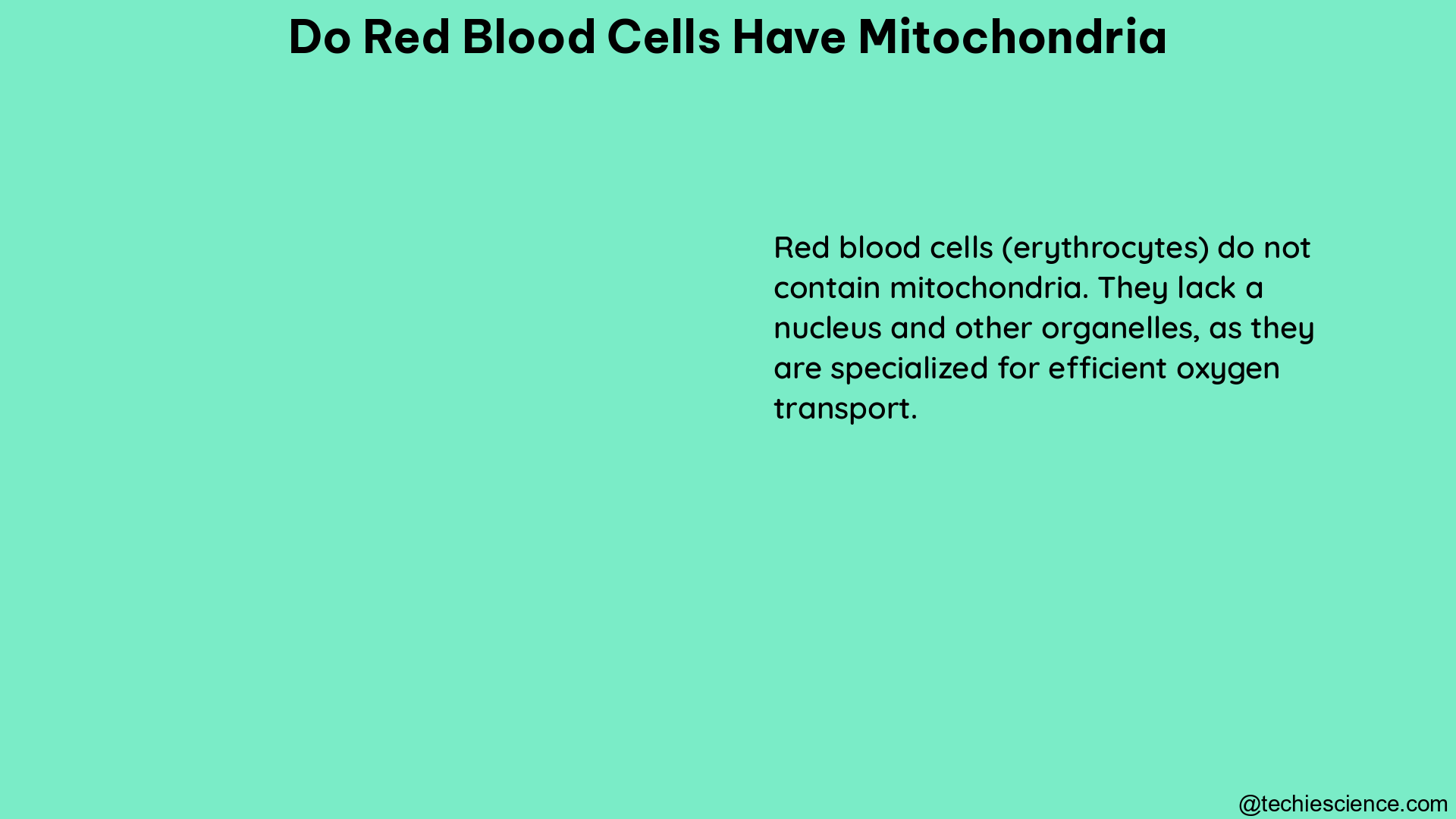Red blood cells (RBCs), also known as erythrocytes, are the most abundant type of blood cells in the human body, responsible for transporting oxygen from the lungs to the body’s tissues. While these cells play a crucial role in our physiology, a common question arises: do red blood cells have mitochondria?
The Maturation Process of Mammalian Erythrocytes
The maturation process of mammalian erythrocytes is a well-studied phenomenon that provides insights into the absence of mitochondria in RBCs. During this process, erythroid precursor cells undergo a series of transformations, including chromatin condensation and nuclear polarization. Ultimately, these precursor cells extrude their nucleus with the help of mitochondria, producing nucleus-free reticulocytes. As the reticulocytes mature into erythrocytes, they clear out the remaining mitochondria and other organelles, leaving behind the specialized red blood cells that we are familiar with.
Proteomics Studies on Red Blood Cells

A comprehensive proteomics study published in the Journal of Proteome Research in 2017 investigated the protein composition of RBCs and their “white ghost” membrane fraction. The researchers identified a total of 2,650 proteins, with 1,890 of them occurring at more than 100 copies per cell. Interestingly, the study did not find significant quantities of mitochondrial proteins, further supporting the absence of mitochondria in RBCs.
Measuring Mitochondrial Function in Red Blood Cells
Another study from 2016 explored the mitochondrial superoxide production, cardiolipin content, and cell membrane resistance to oxidative attack in freshly collected RBCs. The researchers utilized various techniques, including flow cytometry and spectrometry, to measure these parameters. However, the study assumed the absence of mitochondria in RBCs, as it focused on the mitochondrial components within the cells rather than their presence.
Red Blood Cells as a Tool to Study Mitochondrial Function
A 2016 review published in the Journal of Avian Biology discussed the potential of using red blood cells to measure mitochondrial function in birds. Interestingly, the review did not mention the presence of mitochondria in RBCs, but rather focused on the utility of these cells as a tool to study mitochondrial function in other organisms.
Antioxidant Defense in Erythrocytes
A more recent study, published in Antioxidants in 2023, explored the role of peroxiredoxin 2, an important element of the antioxidant defense system in erythrocytes. Again, this study did not mention the presence of mitochondria in RBCs, further reinforcing the understanding that these cells do not possess mitochondria.
Biological Significance of the Absence of Mitochondria in Red Blood Cells
The absence of mitochondria in red blood cells is a crucial aspect of their specialized function. Mitochondria are the powerhouses of cells, responsible for generating energy through the process of oxidative phosphorylation. However, in the case of RBCs, their primary role is to transport oxygen, which does not require a significant amount of energy production. By eliminating mitochondria, red blood cells can focus their resources on efficiently transporting oxygen, without the need for energy-intensive processes.
Moreover, the lack of mitochondria in RBCs simplifies their structure and reduces their overall size, allowing them to more easily navigate the narrow capillaries and deliver oxygen to the body’s tissues. This specialized adaptation enhances the efficiency of oxygen transport, which is essential for maintaining the body’s metabolic processes.
Potential Implications and Future Research
While the absence of mitochondria in red blood cells is a well-established fact, there may be potential implications and areas for future research. For instance, understanding the mechanisms behind the selective removal of mitochondria during the maturation of erythroid precursor cells could provide insights into cellular differentiation and organelle biogenesis.
Additionally, the use of red blood cells as a tool to study mitochondrial function in other organisms, as mentioned in the 2016 review, could lead to new avenues of research. By leveraging the unique properties of RBCs, researchers may be able to gain a better understanding of mitochondrial dynamics and their role in various physiological processes.
Conclusion
In conclusion, the available scientific literature clearly demonstrates that red blood cells do not possess mitochondria. This fact is supported by comprehensive proteomics studies, flow cytometry and spectrometry measurements, and reviews discussing the use of RBCs as a tool to study mitochondrial function in other organisms. The absence of mitochondria in RBCs is a crucial aspect of their specialized function, allowing them to efficiently transport oxygen throughout the body. As research continues to evolve, further insights into the biological significance and potential implications of this characteristic may emerge.
References:
– Large-Scale Proteomics Investigation of Red Blood Cell Membranes
– Mitochondrial Superoxide Production, Cardiolipin Content, and Respiratory Chain Complex IV in Red Blood Cells of Patients with Parkinson’s Disease
– Using Red Blood Cells to Measure Mitochondrial Function in Birds
– Peroxiredoxin 2: A Crucial Antioxidant Enzyme in Red Blood Cells
Hey! I am Sneha Sah, I have completed post graduation in Biotechnology. Science has always been fascinating to me and writing is my passion. As an academic writer my aim is to make Science easy and simple to learn and read.